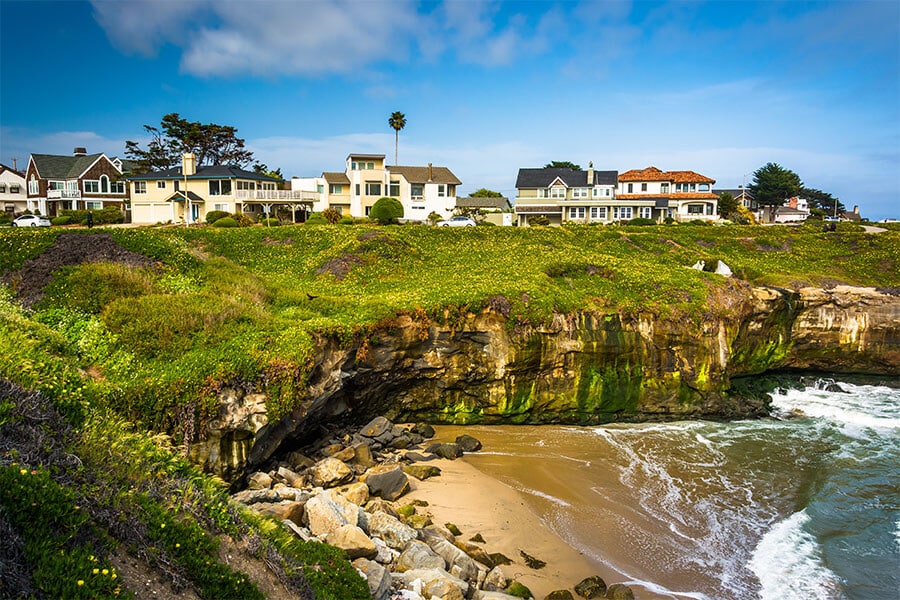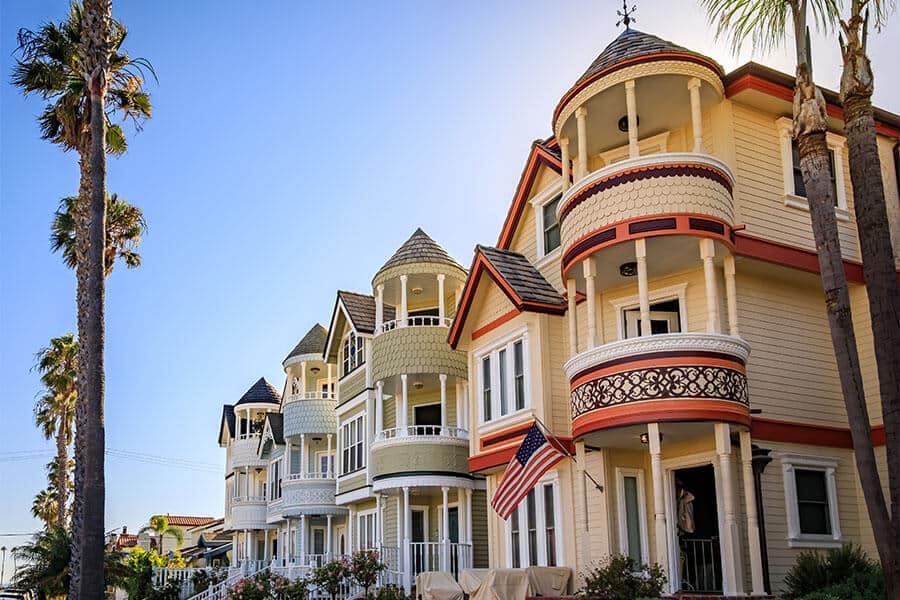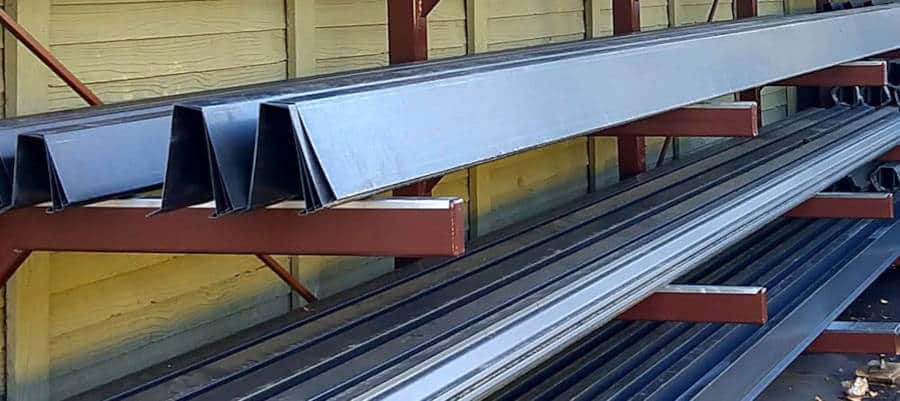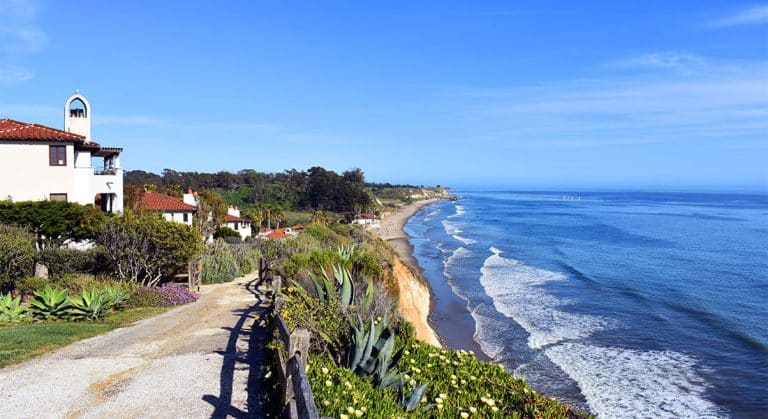Living and Building by the Monterey Bay

Building, renovating or remodeling Santa Cruz homes requires a strategic approach to navigating the unique challenges of coastal living. From strict building codes to the choice of woods and metals, this brief guide will explore some of the most important points to consider for builders, remodelers and DIY’ers in the Monterey Bay area.
Santa Cruz boasts a collection of iconic homes that reflect the unique architectural character of the community. These homes, whether perched on coastal bluffs or nestled among redwood groves, often become symbols of the city’s distinctive charm. Exploring these iconic homes provides insights into the diverse architectural styles that have shaped Santa Cruz over the years.
Unique Santa Cruz Architectural Features

The architectural landscape of Santa Cruz is a captivating blend of diverse styles, shaped by its unique cultural and historical influences. One distinctive feature that stands out is the influence of surf culture. As a world-famous coastal destination for surfers, Santa Cruz has seen the emergence of homes designed with the nautical themes.
From cozy beachfront cottages capturing the laid-back style of a surfing lifestyle to more expansive residences with coastal elements, the surf culture profoundly shapes the aesthetic of Santa Cruz homes.
In addition to the casual beachfront styles, Santa Cruz also has a historical side with the abundance of Spanish Colonial Revival architecture. This style, rooted in California history, reflects a fusion of Spanish, Mexican, and Moorish influences.
Stucco, red tile, and wrought iron characterize this architectural style, adding a timeless and rustic flair to homes in Santa Cruz. The nod to the past through Spanish Colonial Revival architecture contributes to the city’s architectural diversity and tells a story of California’s diverse and storied past.
Here are some more key aspects of architecture for Santa Cruz homes:
Historic Victorian Influence
Many areas in Santa Cruz showcase Victorian-era architecture, reflecting the city’s growth during the late 19th century. Victorian-style homes, characterized by intricate detailing, vibrant colors, and ornate facades, contribute to the charming and eclectic neighborhoods of the city.

Beach Bungalows and Coastal Styles
Given its proximity to the ocean, Santa Cruz features a significant number of beach bungalows and coastal-inspired residences. These homes often emphasize open spaces, large windows to capture ocean views, and designs that facilitate a connection with the outdoors.

Mid-Century Modern Presence
In addition to historic styles, Santa Cruz has a notable presence of mid-century modern architecture. Characterized by minimalistic clean lines, large windows, and a focus on functionality, mid-century modern homes blend well with the natural surroundings and contribute to the city’s architectural variety.

Eclectic Downtown Architecture
The downtown area of Santa Cruz is a melting pot of architectural styles. The mix includes Spanish Colonial Revival buildings, Craftsman-style structures, and contemporary designs. This eclectic blend of Santa Cruz homes and buildings mirrors the city’s bohemian vibe and artistic undercurrents.
Sustainable and Green Building Practices
Santa Cruz has embraced sustainable and green building practices, aligning with the city’s commitment to environmental consciousness. Many new constructions and renovations incorporate eco-friendly features, such as solar panels, energy-efficient designs, and the use of recycled or locally sourced materials.
Architectural Preservation Efforts
The city of Santa Cruz recognizes the value of its architectural heritage, which has led to a multitude of preservation efforts. Organizations and residents work together to maintain the historical integrity of certain neighborhoods while allowing for responsible development that meets the needs of a growing community.
Custom Santa Cruz Homes and Artistic Expression
With a thriving artistic community and a commitment to individual expression, Santa Cruz is home to various custom-designed residences. Architects in the area often collaborate with homeowners to create unique, artistic home designs that stand out as expressions of creativity.
In essence, the architecture of Santa Cruz reflects the city’s dynamic history, its connection to the natural environment, and a spirit of creativity and individuality that defines this coastal Californian gem.
Materials that Weather the Coastal Climate in Santa Cruz
In Santa Cruz, selecting the right materials and metals for architectural projects involves a nuanced understanding of coastal environments.
The salt-laden air from the Pacific Ocean poses a significant challenge, necessitating materials that are highly resistant to corrosion.
Redwood and Cedar
The challenging coastal climate of Santa Cruz necessitates a careful selection of building materials, and local architects often turn to solutions that stand up to the unique environmental demands.

A common choice for woods is the use of redwood and cedar – both of which are known for their exceptional resistance to moisture and pests. These woods not only contribute to the natural aesthetic of Santa Cruz homes but also provide durability in the face of the coastal elements.
Corrosion-Resistant Metals
In addition to these traditional wood choices, the use of corrosion-resistant metals has also become a hallmark of smart construction of Santa Cruz homes.
Materials like stainless steel and copper offer a robust defense against the corrosive effects of salt-laden air, preserving and maximizing the property value.
Stainless steel, with its chromium content, forms a protective oxide layer, preventing rust and maintaining structural integrity. Copper, on the other hand, gracefully weathers with time, acquiring a distinctive patina while retaining its strength.
The incorporation of these materials underscores the commitment to longevity and resilience against the coastal weathering that Santa Cruz homes inevitably face.
For structures in Santa Cruz, where coastal conditions and environmental factors come into play, choosing metals with the right properties is crucial. Here are some metals that are considered ideal:
Stainless Steel
Stainless steel is highly resistant to corrosion, making it an excellent choice for coastal environments. It contains chromium, which forms a protective oxide layer that prevents rusting. It’s durable, sturdy, and has a clean, modern aesthetic.
Aluminum
Aluminum is lightweight, corrosion-resistant, and can withstand exposure to salt air. It’s commonly used for doors, windows, and roofing. However, it can be prone to denting, so the thickness of the material should be considered.
Copper
Copper is perfect for Santa Cruz homes because it has natural corrosion resistance and develops a beautiful, protective patina as it ages. It’s aesthetically pleasing and most often used for roofing, gutters, downspouts, and other archictural elements. While it’s more expensive, its longevity and low maintenance make it extremely cost-effective over time.

Galvanized Steel
Galvanized steel is steel coated with zinc to enhance corrosion resistance. It’s durable and can withstand the corrosive effects of salt air. However, over time, the zinc coating may wear away, so periodic maintenance is recommended.
Weathering Steel (Corten Steel)
Weathering steel is designed to develop a rust-like appearance over time, creating a protective layer. It’s often used in outdoor sculptures and architectural elements. While it requires specific atmospheric conditions to develop its characteristic patina, it can be suitable for coastal areas.

Bronze
Bronze is an alloy of copper, typically containing tin and other elements. It has corrosion resistance and is valued for its aesthetic appeal. Bronze is often used for architectural elements, door hardware, and marine applications.
Titanium
Titanium is a lightweight and corrosion-resistant metal. While it’s less common in construction due to its cost, it can be suitable for applications where weight is a critical factor, such as certain roofing structures.
Zinc
Zinc is corrosion-resistant and forms a protective layer over time. It’s used for roofing, gutters, and cladding. Zinc has a distinctive appearance that can complement modern architectural designs.

When selecting metals for structures in Santa Cruz, it’s essential to consider the specific alloy, finish, and maintenance requirements.
Additionally, the design and engineering aspects, such as fasteners and connections, should align with the chosen metals to ensure the overall integrity of the structure in coastal conditions. Consulting with local architects and engineers experienced in coastal construction can provide valuable guidance.
Local Regulations and Santa Cruz Building Codes

Seismic Considerations
Santa Cruz, nestled along the Pacific Ring of Fire, is not immune to seismic activity. Given its location, local regulations emphasize adherence to seismic standards to ensure the safety and structural integrity of buildings in the event of earthquakes.
Architects and builders in Santa Cruz are accustomed to integrating seismic design principles into their projects, reinforcing structures to withstand the seismic activity that can be part of coastal living.
Height Restrictions
Moreover, the scenic beauty of Santa Cruz, with its expansive coastal views, is something the community values and aims to preserve. As such, there may be specific height restrictions in place to maintain the appearance of the Monterey Bay area.
These regulations play a crucial role in shaping the skyline of Santa Cruz, ensuring that new constructions harmonize with the natural beauty of the area and do not obstruct the breathtaking views that residents and visitors cherish. Understanding and complying with these regulations is an integral part of the architectural and construction process in Santa Cruz.
Preserving Santa Cruz’s Natural Beauty

Landscaping Guidelines
In Santa Cruz, preserving the natural beauty of the landscape extends beyond architectural considerations to encompass landscaping as well.
Local guidelines often encourage the use of native and drought-resistant plants in landscaping projects. These plant choices not only contribute to the aesthetic appeal of properties but also align with the state’s commitment to water conservation.
Landscaping in Santa Cruz is an art that involves selecting plants that thrive in the coastal climate while promoting water conservation.
Sustainable Building Practices

Sustainable building practices further underscore the community’s dedication to environmental preservation. Architects and builders of Santa Cruz homes frequently integrate eco-friendly features into their designs
An example of this might involve the use of energy-efficient systems, recycled or locally sourced building materials, as well as designs that maximize natural light and ventilation.
Sustainable building practices not only reduce the environmental impact of construction but also contribute to the overall longevity of structures in the face of changing environmental conditions.
By harmonizing architectural designs with landscaping that respects the local ecology, and embracing sustainable building practices, Santa Cruz ensures that its natural beauty will endure for generations. These considerations form an integral part of the ethos of construction and development in this coastal community.
Santa Cruz Homes: Conclusion
In conclusion, crafting architectural masterpieces in Santa Cruz involves a delicate dance between preserving the city’s unique aesthetic and addressing the challenges posed by its coastal environment. From the iconic influence of surf culture on home design to the choice of materials resistant to both corrosion and seismic activity, each aspect contributes to designs that stand the test of time.
Contact Kobett Metals for more information on copper roofing materials for your Santa Cruz home or building.






